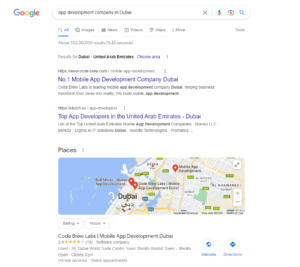
Code Brew Labs marks a successful journey of 9 years as the most prominent mobile app development company Dubai. The company manages to secure the No.1 position in UAE. As the United Arab Emirates has evolved in recent years to a great extent in the digital world, the company has superbly contributed to letting its customers originate and establish their remarkable journey into a successful venture.
Table of Contents

Code Brew Labs is a one-stop solution for delivering high-end rich-feature-loaded mobile applications and web solutions that makes it future-ready for start-up businesses and enterprises. To meet futuristic needs and tactfully handle industry challenges, the company has sheer prowess in creating apps for iOS and Android.
The company’s core emphasis lies in building a robust and scalable app solution that is extensively researched and experimented so it functions faultlessly. Code Brew has the expertise to help business owners and entrepreneurs streamline the purpose of businesses aligned with their vision by delivering a powerful application to make their substantial brand identity in the market.
The company specializes in offering:
It has become one of the most secure, scalable, and high-performing iOS app development Dubai to establish the identity of enterprises and growing startups. From forming conceptualization to developing monetization, the company has got the expertise to cover customers’ needs.
Code Brew stands tall for being a mobile app development company Dubai that ensures to the creation of a best-in-class functional architecture.
With the boom in the app development company UAE industry, Code Brew is a promising organization that has developed trust among thousands of businesses by integrating the latest tech-stack and mobile app development Dubai methodologies.
We have been ranked as the top No.1 app development company in UAE for its utmost customer satisfaction and for offering tailor-made software solutions per business needs.
Get in touch with the marketing mavens of app development company Dubai. Discuss your business needs and make the most of your unique ideas.
Twitter — https://twitter.com/CodeBrewLabs
Youtube — https://www.youtube.com/c/codebrewlabs-best-mobile-app-development-company
LinkedIn — https://www.linkedin.com/company/code-brew-labs/
Facebook — https://www.facebook.com/codebrewlabs/
Instagram — https://www.instagram.com/codebrewlabs/
